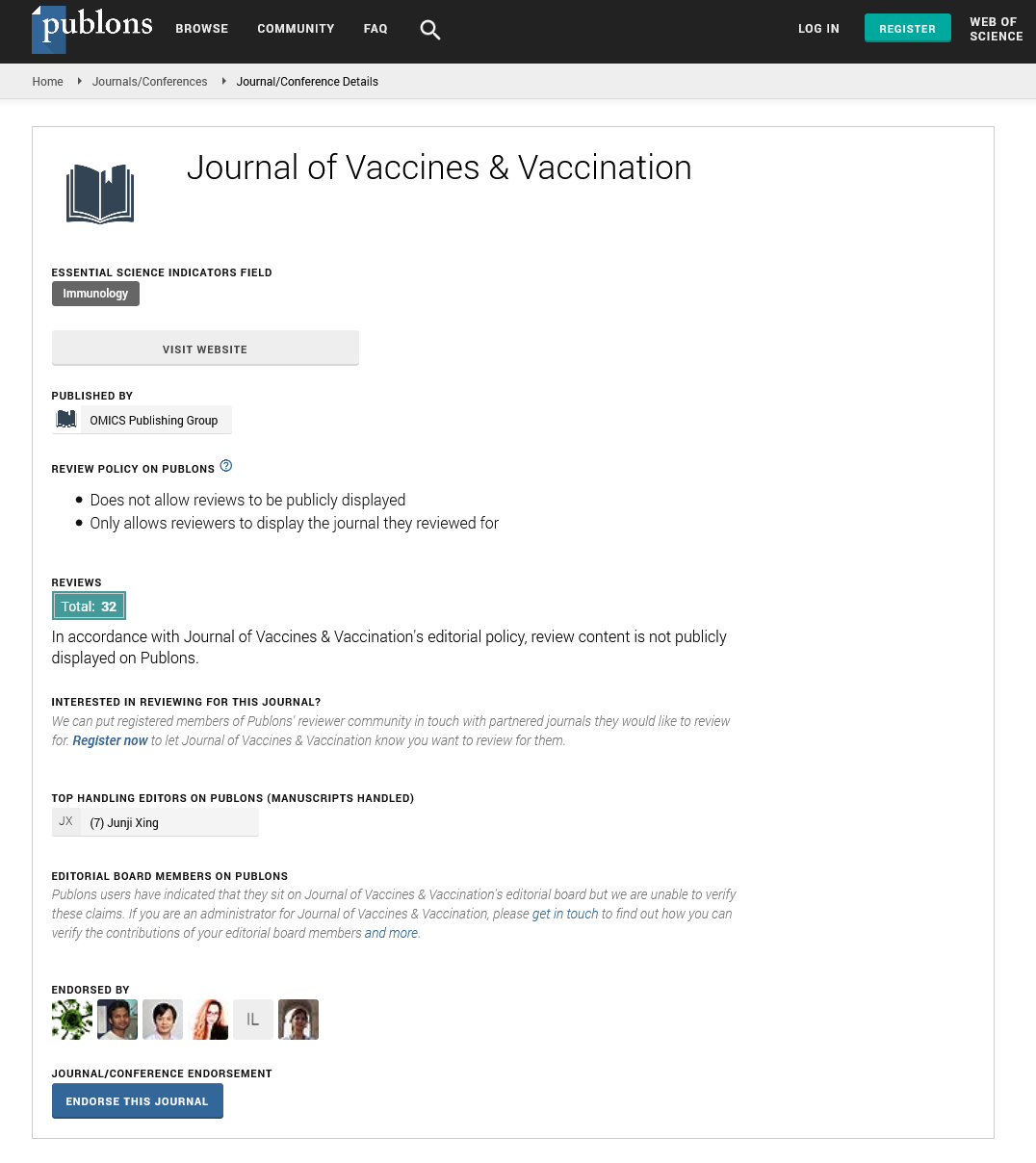Indexed In
- Academic Journals Database
- Open J Gate
- Genamics JournalSeek
- JournalTOCs
- China National Knowledge Infrastructure (CNKI)
- Scimago
- Ulrich's Periodicals Directory
- RefSeek
- Hamdard University
- EBSCO A-Z
- OCLC- WorldCat
- Publons
- MIAR
- University Grants Commission
- Geneva Foundation for Medical Education and Research
- Euro Pub
- Google Scholar
Useful Links
Share This Page
Open Access Journals
- Agri and Aquaculture
- Biochemistry
- Bioinformatics & Systems Biology
- Business & Management
- Chemistry
- Clinical Sciences
- Engineering
- Food & Nutrition
- General Science
- Genetics & Molecular Biology
- Immunology & Microbiology
- Medical Sciences
- Neuroscience & Psychology
- Nursing & Health Care
- Pharmaceutical Sciences
Promising results in the assessment of new vaccine candidates against Campylobacter in poultry
15th Annual Summit on Vaccines and Immunization
February 20-21, 2017 Berlin, Germany
Marine Meunier, E Vigouroux, T Poezevara, V Beven, S Quesne, M Amelot, M Guyard, M Chemaly and D Dory
ANSES - French Agency for Food, Environmental and Occupational Health & Safety, France
Scientific Tracks Abstracts: J Vaccines Vaccin
Abstract:
Campylobacteriosis is the most prevalent human bacterial gastrointestinal disease in Europe. Birds are the main reservoir of Campylobacter and human contaminations principally occur by consumption and handling of poultry meat. It was estimated that a Campylobacter reduction from 2 to 3 log10 CFU/g of the intestinal contents in live broilers could be responsible for a decrease of 76% to 100% of the infection in humans. Vaccination of poultry could be a potential way in this goal but despite many studies, no efficient vaccine is available yet and research of more powerful vaccine antigens against Campylobacter is needed. The recent in silico analysis of Campylobacter genome using the reverse volcanology strategy allowed the identification of 14 potential new vaccine candidates. After developing an avian vaccine protocol consisting in two immunizations by the intramuscular route on day five with DNA and day 12 with proteins followed by an oral challenge on day 19, we assessed in vivo immune and protective powers of six new vaccine candidates, individually or in combination. Among the six antigens, four had a significant effect on both IgY production in serum and reduction of Campylobacter caecal counts. The mean reduction of caecal counts with those four proteins varied from 2 to 4.2 log10 CFU/g of caecal content. The pooled proteins had no protective effect. A new in vivo experiment is actually on going in order to confirm these results. The first results are promising since they reach reductions better than those estimated to impact human diseases incidence. Also these results proved the interest of the reverse vaccinology approach to screen new candidate proteins that may become efficient vaccines.
Biography :
Marine Meunier completed her Master’s in Immunology and Vaccinology and 7-month internship at GSK Vaccine, and PhD at French Agency for Food, Environmental and Occupational Health & Safety (ANSES) in the Laboratory of Ploufragan. The thesis project in which she is involved is a part of European CAMPYBRO project about control of Campylobacter infection in broiler flocks through two-steps strategy: Nutrition and vaccination. She developed the tools to assess the vaccine potential of these antigens (development of an avian vaccine protocol against Campylobacter and ELISA tests). She used molecular biology tools and FLPC for the production and purification of vaccine antigens.
Email: marine.meunier@anses.fr

